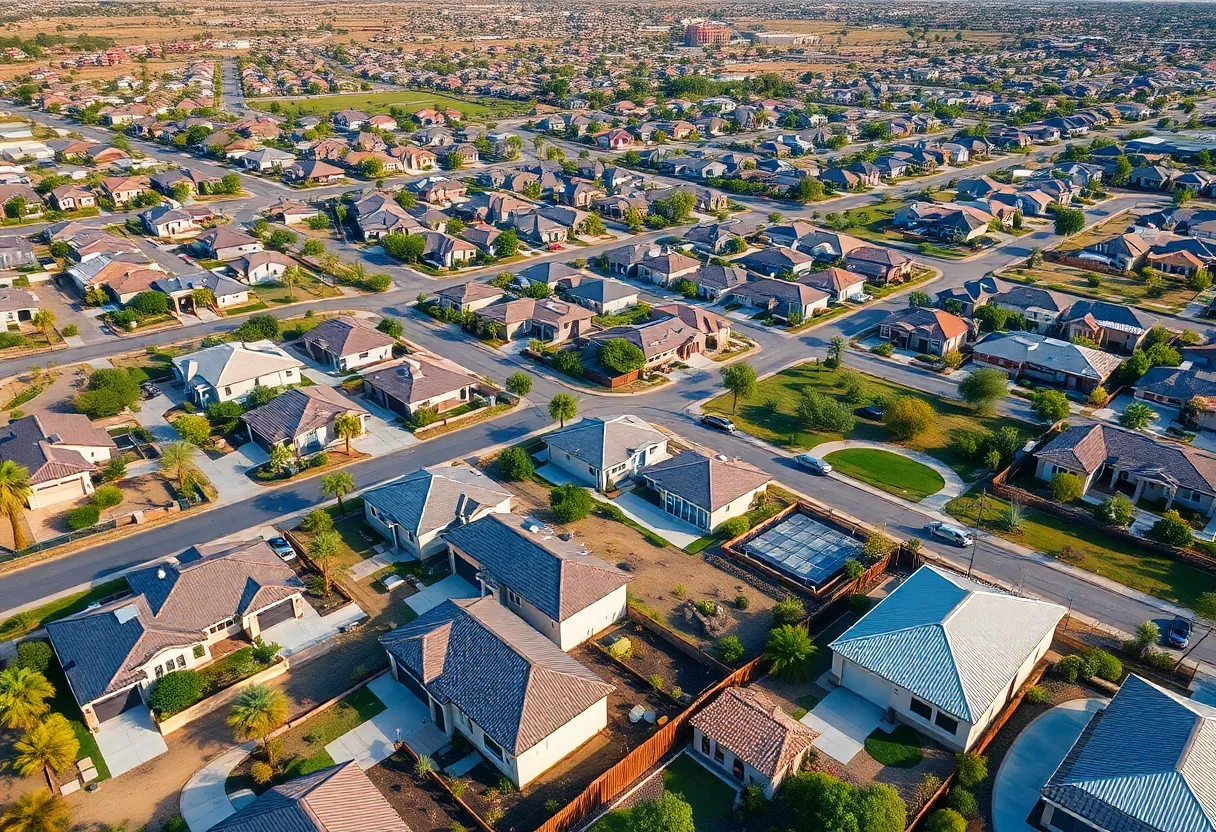Tucson, October 7, 2025
Tucson is experiencing a significant housing construction boom in 2025, leading Arizona with over 5,000 new housing units initiated. The city’s growth is driven by population increase and the availability of affordable land, particularly in the east-side suburbs. This surge is also generating approximately 2,000 construction jobs locally, thereby stimulating the economy. As developers focus on modern lifestyles and affordability, Tucson is reshaping its residential landscape and meeting the rising demand for homes.
Tucson Leads Arizona in New Housing Boom with Over 5,000 Units Started in 2025
Tucson is spearheading Arizona’s housing construction surge in 2025, with more than 5,000 new units initiated this year alone. This development positions the city as the top performer in the state for residential building activity, outpacing other regions amid rising demand for affordable homes.
The rapid pace of construction reflects strong market interest, fueled by increasing population and available land options. Developers are focusing efforts on expanding residential areas, particularly in the city’s outskirts, to meet the needs of growing families and newcomers. This activity not only addresses housing shortages but also stimulates the local economy through job creation.
Key factors driving this boom include the influx of residents seeking more space at reasonable costs. With remote work becoming more common, many are drawn to Tucson’s suburbs where larger homes are being built without the premium prices seen in bigger metros. The east-side areas, in particular, are seeing significant investments from major homebuilders looking to capitalize on these trends.
Developers Pour Resources into East-Side Suburbs
Construction is concentrated in Tucson’s east-side suburbs, where land availability allows for expansive projects. Companies like Pulte Homes are at the forefront, breaking ground on multiple communities designed for modern lifestyles. These developments feature a mix of single-family homes and townhouses, catering to diverse buyer preferences while keeping affordability in focus.
The emphasis on these areas stems from their proximity to urban amenities and natural landscapes, making them attractive for long-term settlement. Projects here are progressing steadily, with some expected to deliver units by late 2025, helping to ease pressure on the rental market and provide options for first-time buyers.
Job Growth and Economic Impact
This housing surge is generating substantial employment opportunities, with around 2,000 construction jobs created locally. Workers in trades such as carpentry, electrical, and plumbing are in high demand, boosting wages and supporting related industries like material suppliers. The ripple effect extends to services such as landscaping and real estate, contributing to overall economic vitality in the region.
As more homes are built, the influx of workers and families is expected to increase local spending, benefiting retail and education sectors. This cycle of growth underscores how residential development serves as a foundation for broader community prosperity.
Market Trends and Affordability Factors
Tucson’s appeal lies in its ability to offer spacious homes at competitive prices, a combination that sets it apart in Arizona’s competitive landscape. The shift toward remote work has amplified this advantage, allowing professionals to relocate without sacrificing quality of life. Experts note that the city’s growth is sustainable due to thoughtful planning that balances expansion with infrastructure improvements.
Population increases, driven by migration from costlier areas, have heightened the need for new housing. Affordable land parcels enable developers to keep costs down, passing savings to consumers. This dynamic is creating a buyer’s market in suburbs, where square footage per dollar remains higher than in central Tucson or neighboring cities.
Challenges and Future Outlook
While the boom brings benefits, it also presents challenges like managing traffic and ensuring environmental sustainability. City officials are coordinating with developers to incorporate green spaces and efficient utilities in new builds. Looking ahead, projections indicate continued momentum, with potential for even more units if demand persists.
The focus on east-side growth could redefine Tucson’s skyline, turning suburban fringes into vibrant neighborhoods. As 2025 progresses, this leadership in housing construction highlights the city’s role as an economic engine in Arizona, drawing investment and residents alike.
In summary, Tucson’s over 5,000 new housing units mark a pivotal moment for local development. By leveraging population trends, land resources, and remote work shifts, the city is building a foundation for future stability. This progress not only meets immediate housing needs but also fosters long-term economic health through job creation and community enhancement.
FAQ
What is driving Tucson’s housing construction in 2025?
Tucson leads Arizona in new housing construction with over 5,000 units started in 2025, driven by population growth and affordable land.
Where are the main development areas?
Developers like Pulte Homes are investing heavily in east-side suburbs.
How is the housing market performing?
Tucson’s market is booming due to remote work trends, offering spacious homes at competitive prices.
What economic benefits are coming from this?
This surge is creating 2,000 construction jobs locally.
Key Features Chart: Tucson’s 2025 Housing Boom
| Feature | Details |
|---|---|
| New Units Started | Over 5,000 in 2025 |
| State Ranking | Leads Arizona |
| Driving Factors | Population growth and affordable land |
| Key Developers | Pulte Homes investing in east-side suburbs |
| Market Trends | Booming due to remote work, spacious homes at competitive prices |
| Job Creation | 2,000 construction jobs locally |
Deeper Dive: News & Info About This Topic
HERE Resources
Tucson’s Social Security Office Modernizes with Digital Tools




